Anaheim/OC Hotel & Lodging Association Taps Presidio for Management
As a leading public affairs and communications firm in Southern California, we at Presidio are thrilled to announce that the Anaheim/Orange County...
6 min read
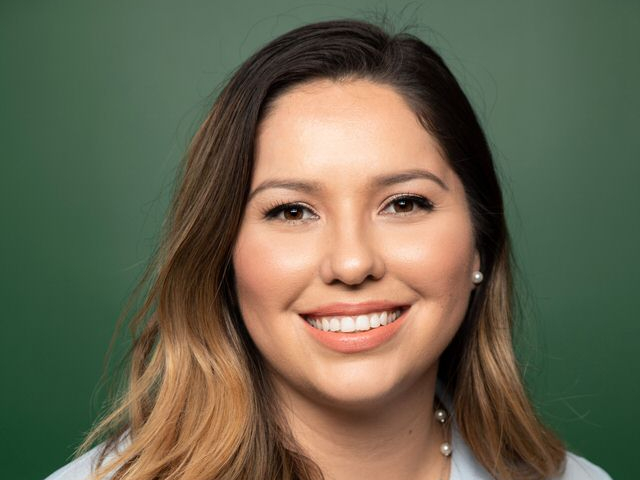 Samantha Marquez
:
Aug 25, 2020 9:42:18 AM
Samantha Marquez
:
Aug 25, 2020 9:42:18 AM

The transition to Distance Learning worries many parents, guardians, and caregivers. The best way to address their concerns is to communicate clearly and frequently what your approach is going to be as a teacher or administrator. It's more essential than ever to keep parents informed, since widespread Distance Learning is largely unprecedented and requires significant parent involvement.
In an effort to help fortify the connection between schools and parents during this difficult time, we have compiled a comprehensive guide to the various forms of communication that are going to help you get through Distance Learning with tenacity, positivity, and, most importantly, success.
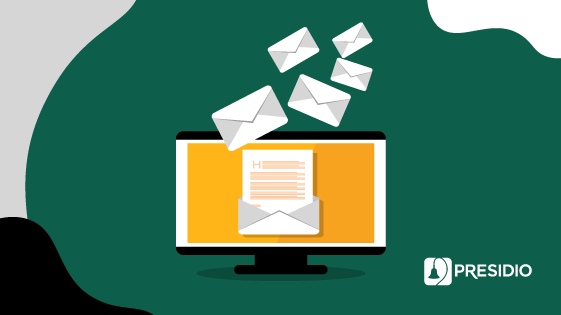
With the transition to Distance Learning, it is vital to communicate often. Don’t wait until something goes wrong to reach out. You want to build a rapport immediately - this is especially important for virtual education, as many parents are likely uncertain at the moment and need extra encouragement and outreach to keep their concerns at bay. So, make sure to outline what your approach to Distance Learning is going to be right at the start of the school year, and then keep parents updated as the year progresses. You can even send out daily messages, or weekly newsletters, to make sure that parents know what is happening with their child’s new style of education.
Take advantage of the fact that all forms of communication are now virtual! Play around with different apps, message boards, and social media platforms to find out what suits your class best. If you don’t find any new systems that you like, you can always turn to more traditional methods: emails, texts, or phone calls. The main goal is to figure out both what you feel most comfortable with and which communication tools work best for the parents in your class. Don’t be afraid to send out a poll to gauge their levels of tech savvy. There are free services that you can use for this, like Survey Monkey or Google Forms, so you don’t even have to worry about cost being a barrier. Distance Learning is most successful when everyone feels connected and supported, so make that your priority when picking your communication channels.
Since Distance Learning requires more parent support than traditional classroom learning, it's important to acknowledge parent contributions and express thanks. In doing so, you show that you appreciate them. You can support parents by asking them to send in photos or written testimonials of their Distance Learning successes to either yourself or your school’s principal. Encourage them to share the positive aspects of learning at home. This will not only help them to feel more excited about Distance Learning, but might give other parents ideas of how they can improve their own child’s Distance Learning experience. As parent participation is essential for virtual education, praising them is a great way to keep them inspired and engaged. Sharing said praise and accomplishments on social media or in email communications also allows parents - and students - to feel more connected to your school as a whole. This will definitely bolster your Distance Learning program all-around!

GroupMe is an app that allows many cell phone users to communicate with each other in one message group. You can use it to send updates throughout the school day or to send out urgent memos. However, you have to make sure that parents understand that the app is not for personal conversations, otherwise they may flood the group with nonessential messages.
The Remind App is another great way to communicate with parents, as it is most similar to traditional text messaging. The app offers a very direct method of communication - it goes straight to cell phone numbers - which may be your best bet to reach working parents in a pinch. However, since the correspondence from this app will show up only as a text message, it's not great for sharing pictures or long-form text. Thus, the Remind App is best suited for sending out brief or urgent notifications, or for communicating in an emergency.
Weekly or monthly updates on a student’s participation are a great way to let parents know the ways in which Distance Learning is or isn’t working for their child. These progress reports can help them decide whether or not their student needs more support. Remember, a progress report doesn’t have to be time-intensive for teachers - it can come in the form of a brief, templated email that highlights the main positives and negatives of a student’s week.
Try out several different social media platforms in order to find the best fit for your class’s parents. You can make classroom pages or accounts on Facebook, Instagram, or Twitter to see which one is your favorite. Facebook is great, because most parents likely already have an account and will be able to access your page easily. Instagram is also a good place for you to showcase what that you’re working on with your students. You can use it for posting updates, student work, or Zoom class selfies, but keep in mind that it’s not a great platform for posting longer messages. Facebook is better suited for that. Twitter allows for the shortest text blurbs, so it's a good option if you are just looking to send out quick updates and photos. Whichever you choose - just make sure you get permission from all parents before posting any photos of or messages about their students!

In order to combat the uncertainty that the newness of Distance Learning often generates, you need to build a strong foundation of trust. Let parents know right away that you will be there consistently to provide comprehensive updates and support systems throughout the entirety of Distance Learning. Parents will feel a lot better when they know what to expect from you and are assured that your school’s administration has a solid plan for the transition to virtual education.
Newsletters are a great way for administrators to communicate with parents at any time, but they will be especially useful during Distance Learning. Virtual education is more isolating than the traditional classroom experience, but you can use your newsletter as a way to connect your school community. In addition to covering the cut-and-dry aspects of Distance Learning news, consider also highlighting any fun virtual projects or innovative study methods that have been developed by your school’s teachers, parents, or students. Weaving in the positive aspects of virtual education will lighten up your newsletter and entice more recipients to actually read through the whole email. This of course, will also ensure that your more serious updates will also have more eyes on them. Overall, sending out a newsletter is a surefire way to keep parents informed on how you are managing to make Distance Learning a success at your school!
These can be resources like food banks, financial aid, or mental health strategies. Or, they can be sites with free online books, educational games, or online tutoring. Just make sure that you’re letting parents know that you’re there to support them in any way that they need. Distance Learning is going to be hard on many working parents, so find ways to help lift their burden - not add to it. This will only serve to bolster your relationship with your school’s parents in the long run.
You can find some helpful educational resources here:
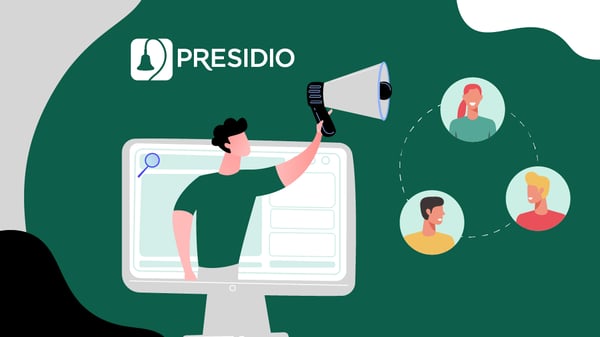
As mentioned above, newsletters are a great way to communicate with parents about Distance Learning. These can be structured to include a personal message from the principal with a breakdown of updates below - including short text blurbs and captivating photos. Newsletters can be posted on your school website, as well as sent out in a mass email, which allows you to really spread the word.
You can also have an app developed for your school that parents can download on their phones. This provides an excellent place to post updates, photos, links - really any pertinent information that you want to be available to parents. As most people constantly have their phone on hand, this is a great option that allows parents to stay connected 24/7 if they so desire.
Email blasts are similar to newsletters, but they can be less formatted. They can be used as a more frequent way to update parents, and they don’t have to always include a personal message and curated photos; they can simply be a quick mechanism of communication that allows you to send out notifications whenever you need, without having to spend much time making them look perfect. You can always supplement your newsletter with shorter email blasts throughout the month.
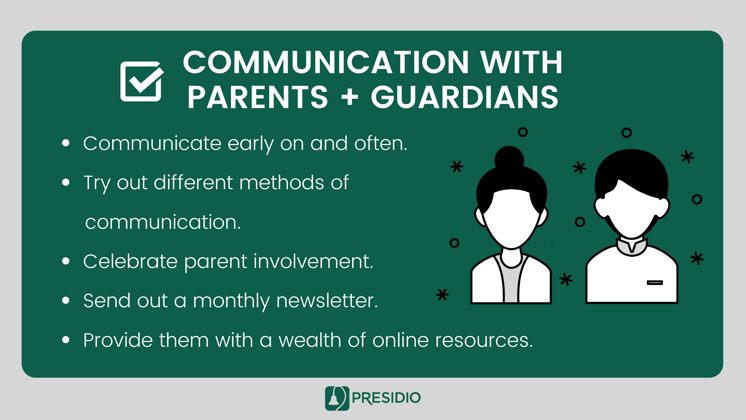
However you choose to communicate with your school’s parents, whether you are a teacher or an administrator, make sure you are communicating clearly and frequently. Explore all of the methods of communication that are available to you, to best fit the needs of your class or school’s parents. You want them to feel connected, supported, and appreciated during this stressful time, and if you follow the recommendations laid out in this post, you will be able to accomplish that. Distance Learning may be tough, but effective communication can help smooth out many of the bumps in the road along the way.
Caroline Baetkey contributed to this post.
 Samantha Marquez
Samantha Marquez
Director of Public Agency Services
Samantha Marquez is a community relations and engagement specialist with over six years of experience in legislative affairs and targeted policy messaging on the local and state level. Before coming to Presidio, Samantha served as the District Director to the Majority Leader of the California State Assembly, where she served as a liaison between local public agencies and the state government. In the Assembly, Samantha was the Majority Leader’s principal aide for K-12 education and transportation.
 Caroline Baetkey
Caroline Baetkey
Intern
Caroline is a rising senior at UCLA, where she is pursuing a B.A. in History with minors in Film, Television & Digital Media and Digital Humanities. She is experienced in a diverse array of communications, including fashion public relations, influencer outreach, and social media marketing. After she graduates in Spring 2021, Caroline plans on working in PR and Marketing.

As a leading public affairs and communications firm in Southern California, we at Presidio are thrilled to announce that the Anaheim/Orange County...

Presidio is excited to welcome the Arts Council for Long Beach (ACLB) as a new client for our government relations, strategic communications,...
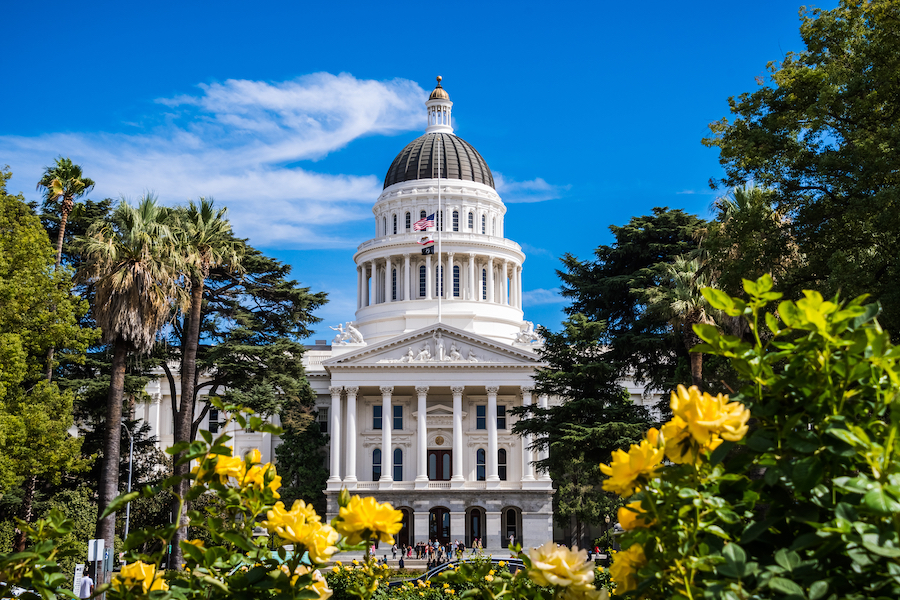
Presidio, a leading public affairs firm, is pleased to announce that we have been retained by the California Association of Code Enforcement...